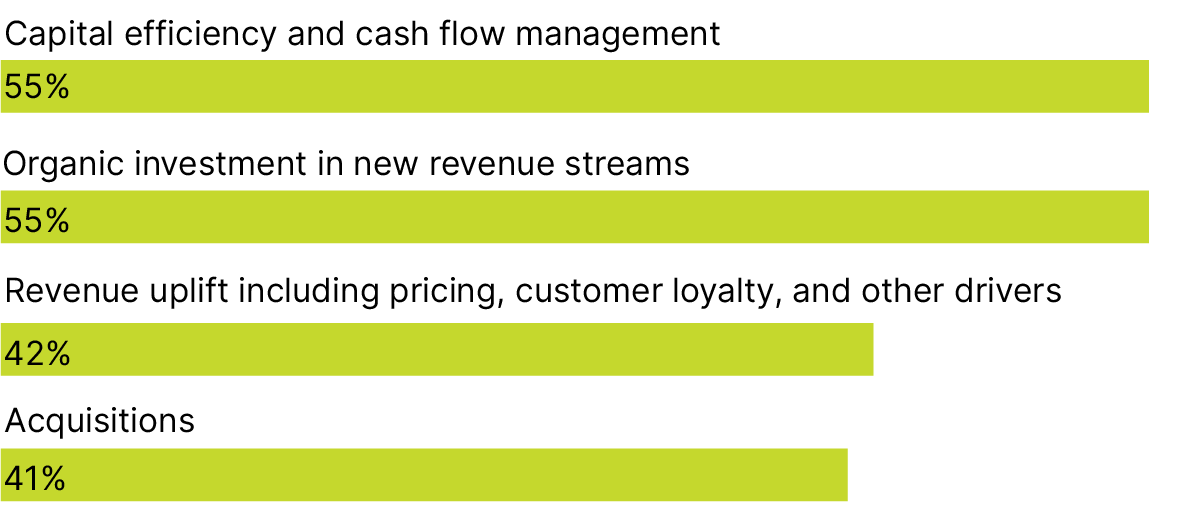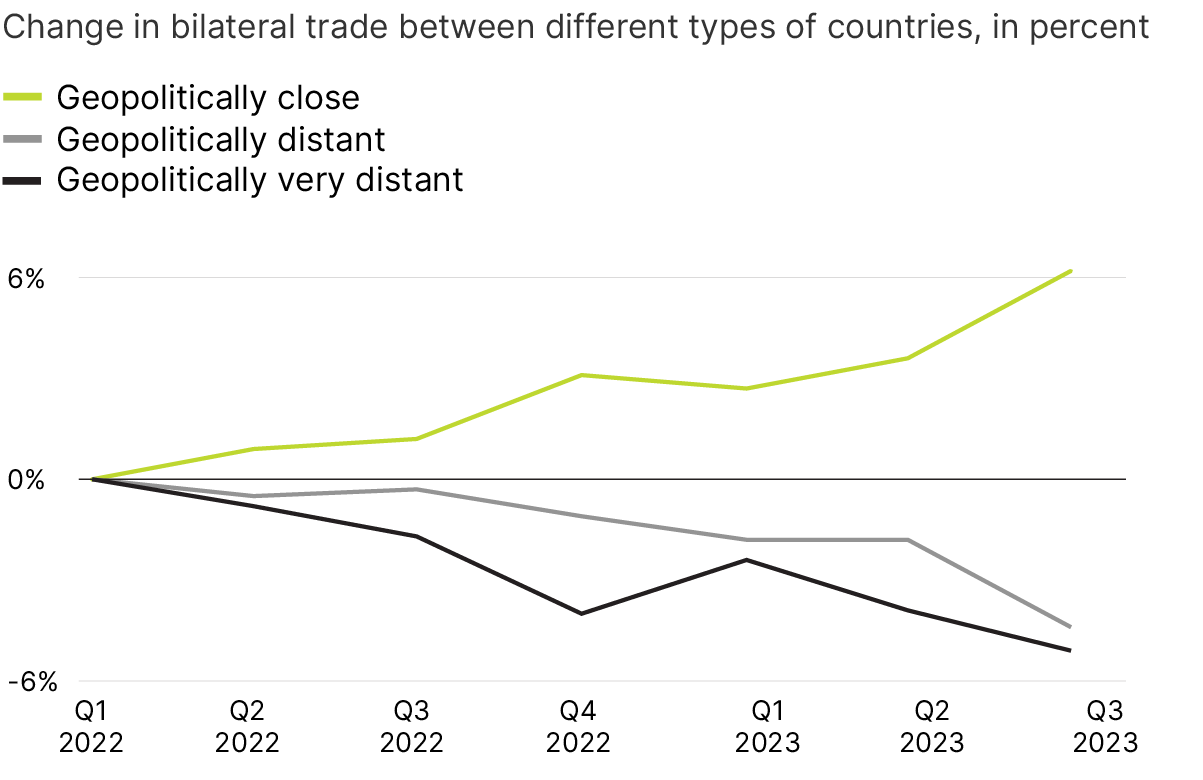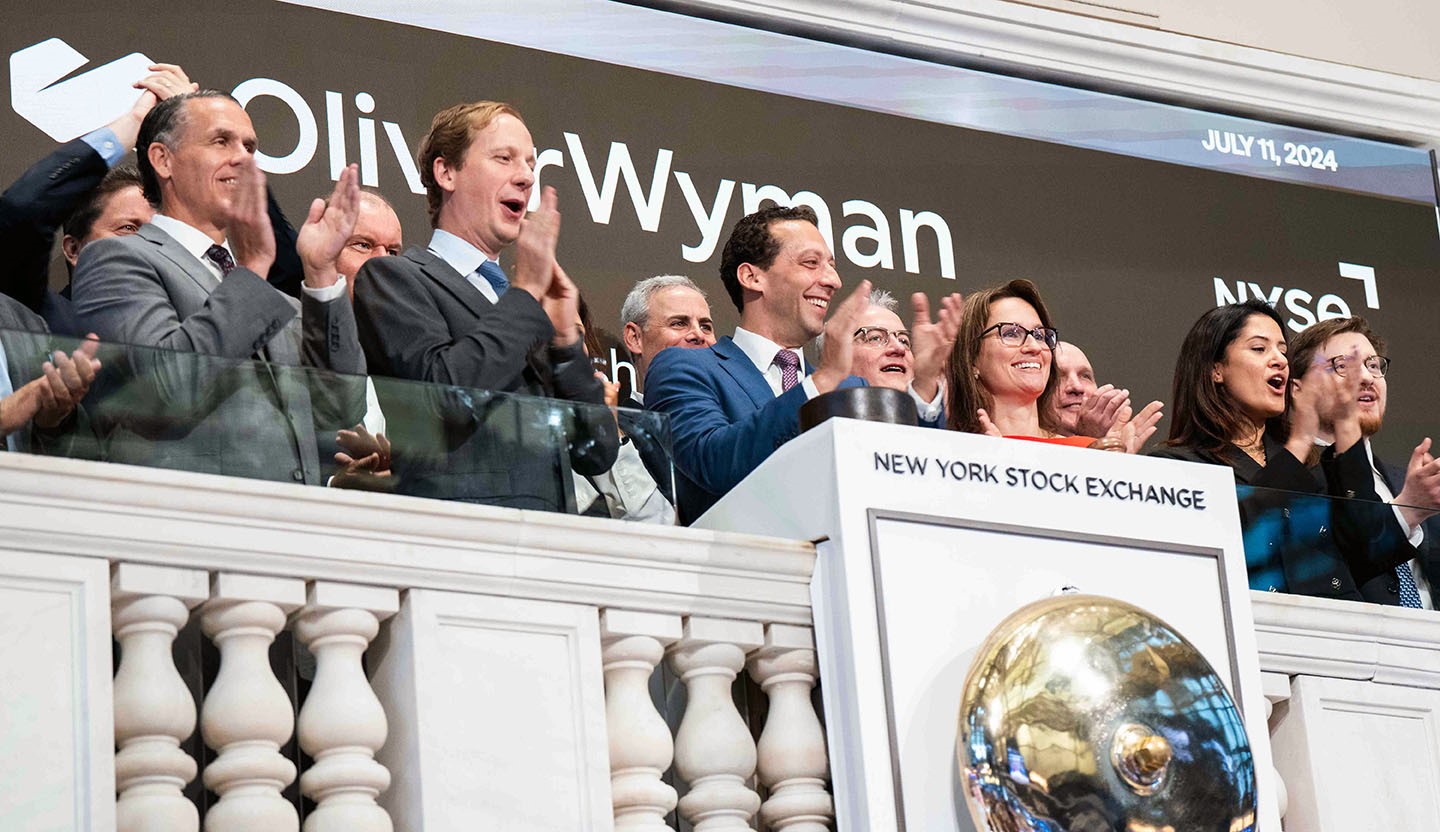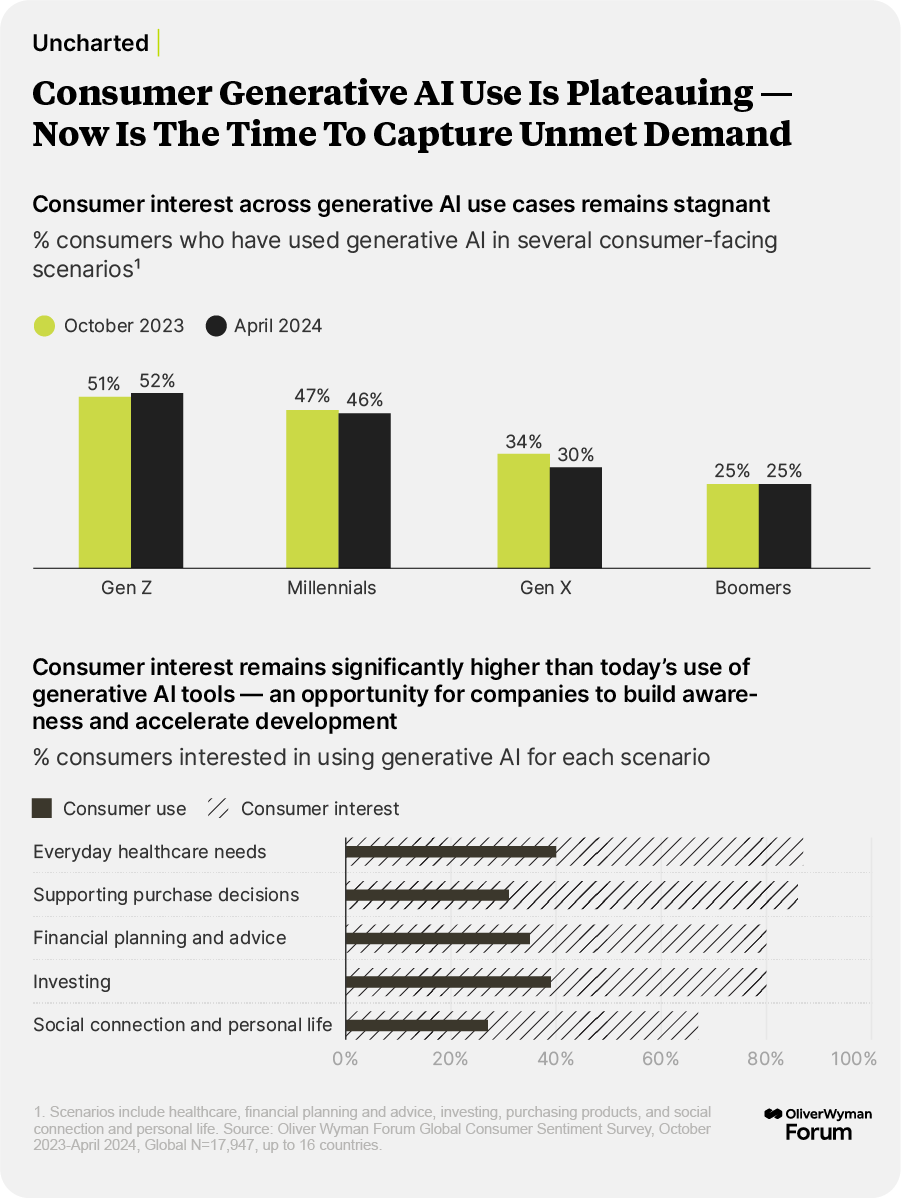Rarely has a business environment appeared both so promising and so uncertain. The global economy is growing at a steady if modest rate, inflation continues to moderate, and technology fever is running high. Yet companies today face challenges few chief executives have experienced in their careers, including high interest rates, protectionist trade policies, and increasing geopolitical risks.
CEOs are responding with a new playbook tailored for these volatile times, one that emphasizes investment in new activities — especially generative artificial intelligence (AI) — as well as efficiency drives in existing operations, according to a new survey of CEOs of NYSE-listed companies conducted by the Oliver Wyman Forum and the New York Stock Exchange.
CEOs identify their priorities for increasing shareholder value

Question: “What are your top three priorities for increasing shareholder value in the next one to two years? (Select the top three),” “Please rank the three priorities you selected on a scale of high priority to low priority”
Source: Oliver Wyman Forum x NYSE CEO Survey 2024 (N=98), Oliver Wyman Forum analysis
Fully 55% of CEOs surveyed cited organic investment in new revenue streams among their top three priorities for creating shareholder value, while an identical percentage ranked capital efficiency and cash flow management in their top three.
The message is clear: Companies can’t afford to toggle between “risk on” and “risk off” approaches at a time of higher-for-longer interest rates and accelerating technological disruption. They need to drive growth and value at the same time.
Betting on AI
The new growth agenda shows up most clearly in attitudes toward AI, with CEOs overwhelmingly regarding the technology as a tool for containing cost and driving revenue growth.
Fully 98% of the large-company CEOs said they consider AI an opportunity for their business rather than a risk. More than 90% said they are investing in AI for operational efficiency, and 87% said they are investing to boost workforce productivity. By comparison, 58% said they are investing to develop new revenue streams.
AI growth ambition skews to large firms

Source: Oliver Wyman Forum x NYSE CEO Survey 2024 (N=97), Oliver Wyman Forum analysis
Scale is a big differentiator here. Nearly two-thirds of large companies are investing in AI with the aim of becoming market leaders in at least one use case, while small companies are tending to invest incrementally to build capabilities. But there’s broad agreement that the biggest mistake would be to do nothing at all. More than 40% of CEOs said one of their top AI-related risks is not moving fast enough and being left behind by competitors.
Assessing the global implications
The risk-adjusted growth strategy CEOs are pursuing resonates globally even if the survey was conducted among heads of NYSE-listed companies. Europe, for instance, absorbed millions of immigrants after the invasion of Ukraine and dramatically reduced its dependence on Russian energy. Firms in the region face a more-sluggish economy and greater regulation than their American counterparts, and a political environment that may be even more polarized.
Asia, meanwhile, is central to a historic commercial rebalancing as multinationals seek to sidestep global trade disputes and improve supply chain resilience with so-called “China Plus One” strategies, which source a share of products from one or more other countries, and friend-shoring, which shifts production to countries friendly with the end market. The result is a 6.2% increase in trade between geopolitically close partners in 2022 and 2023. Our survey provides fresh evidence of this trend, with 50% of CEOs saying they plan to prioritize supply chain resilience when making investment decisions.
Trade tilts toward friendly partners

UNCTAD Global Trade Update, December 2023
Playing for growth while managing risks
The global economy has experienced plenty of turmoil in the past 25 years — a bursting tech bubble, a worldwide financial meltdown, a sovereign debt crisis in Europe, and a global pandemic, to name a few. Yet this time the challenges really are different, including wars in Ukraine and the Middle East and escalating trade and geopolitical rivalry between not only the United States and China but also broader groups of countries aligned with one or the other.
Some 54% of CEOs rated government interference in the economy via regulation, protectionism, and subsidies as being among the most disruptive factors for their business. That’s a stark change from the deregulation, free trade, and laissez-faire environment that prevailed in recent decades. Another 51% cited volatile inflation and interest rates, while 37% mentioned geopolitical instability.
Corporate bosses are tackling these issues head on. More than three-quarters of CEOs said they plan to take action in the next year or two to address geopolitical instability, protectionism, and industrial policies, and 60% plan to reduce exposure to higher-risk regions. This is a reframing of globalization, not a rejection, as most companies are shifting their footprints to friendly countries. Only 16% of CEOs said they plan to reshore operations domestically.
Despite the potential hazards, three-quarters of CEOs see opportunity, rather than risk, in today’s competitive environment, including mergers and acquisitions and disruptive new business models. And some 71% are optimistic about the ways rapidly changing customer demographics and preferences could fuel growth.
The consensus is clear. At a time of turbulent change on so many fronts, the biggest danger for most CEOs is not taking risks to drive future growth.

John Romeo, CEO of the Oliver Wyman Forum, led a group of CEOs and Oliver Wyman executives to ring the opening bell at the New York Stock Exchange on July 11, 2024, marking the launch of the Oliver Wyman Forum-NYSE report "The New Growth Agenda."
With global temperatures continuing to set new records each month and greenhouse gas emissions well above the trajectory required to get to net zero, the world urgently needs new solutions to combat climate change. Carbon dioxide removal (CDR) has a key role to play, but it will require a more-supportive policy framework to reach commercial scale.
Global issuance of CDR credits has grown at a 23% annual rate over the past four years, yet the market provides just a fraction of what’s needed if companies and governments are to achieve their climate goals, according to a new report from Oliver Wyman, the City of London Corporation, and UK Carbon Markets Forum. Credits issued last year represented 41 million metric tons of carbon removal, only 1% of the annual volume required by 2050 to achieve net zero emissions.
The market for credits is currently dominated by bilateral deals between a small number of motivated companies and suppliers of credits. Microsoft, for example, recently agreed to buy credits for 3.3 million metric tons of carbon removal over 10 years from Stockholm Exergi, a utility company that is building a facility to capture and store carbon dioxide emitted from a biomass power plant.
Scaling up the market requires action on several fronts, according to the report. They include international alignment on minimum standards for carbon removal credits with independent oversight, greater clarity on the role carbon credits can play in corporate plans for transitioning to net zero, and more financial support for CDR projects and the development of the CDR credits market.
CDR credits can provide crucial financing to develop and scale up carbon capture technologies. Sales of credits amounted to just $2.7 billion last year, but a more supportive policy framework could help expand the market to as much as $100 billion by 2035, the report contends. That would represent a critical investment in our future.
Every month, we highlight a key piece of data drawn from three years’ worth of consumer research.


